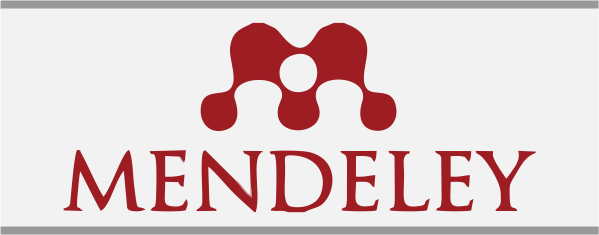Translanguaging as an Instructional Strategy in Adult ESL Classroom
(1) York University
(2) King Khalid University
(3) King Khalid University
(*) Corresponding Author
Abstract
The use of the first language (L1) in adult second (L2/SL) or foreign language (FL) classrooms has always been a bone of contention over the past few decades. Many are in favor of L1 use terming it as constructive and facilitating for language learning while some disapprove that practice and identify it as a hindrance to the teaching and learning of a language. Of late, the concept of translanguaging has added a new dimension to this long-standing debate of using L1 in teaching/learning L2 since it basically insists on viewing languages as a single unitary system as opposed to the traditional linguistic perception of L1 versus L2. However, there have only been a very few studies on translanguaging with particular emphasis and attention given to ESL/EFL adults at the college/university level. This research study thus attempts to shed light on the theoretical underpinnings of this L1-L2 dichotomy and discuss how translanguaging differs from the customary notion of using L1 in the adult L2 classroom. This study uses a qualitative research method that exclusively uses the relevant secondary references/works available on the topic. The results demonstrated that both translanguaging and the notion of L1use in the L2 classroom are pedagogically similar as both allow the use of L1 in L2 classrooms at varying degrees though theoretically, they are different.
Keywords
Full Text:
PDFReferences
Atkinson, D. (1987). The mother tongue in the classroom: A neglected resource? ELT journal,41(4), 241-247.
Auerbach, E. R. (1993). Reexamining English only in the ESL classroom. TESOL Quarterly, 27(1), 9-32.
Bialystok, E & Smith, M.A.S. (1985). Interlanguage is not a state of mind: An evaluation of the construct for second- language acquisition. Applied Linguistics. 6. 10.1093/applin/6.2.101.
Brown, H. D. (1994). Principles of language learning and teaching (3rd ed.). USA: Prentice Hall Regents.
Brown, H. D., & Lee, H. (2015). Teaching by principles: An interactive approach to language pedagogy (Fourth ed.). White Plains, NY: Pearson Education.
Burton, J., & Rajendram, S. (2019). Translanguaging-as-Resource: University ESL Instructors’ Language Orientations and Attitudes toward Translanguaging. TESL Canada Journal, 36(1), 21 - 47. https://doi.org/10.18806/tesl.v36i1.1301
Canagarajah, A. S. (2007). Lingua Franca, Multilingual Communities, and Language Acquisition. Modern Language Journal, 91, 923â€939.
Canagarajah, A. S. (2013). Translingual practice.NewYork/Abingdon,UK:Routledge.
Cook, V. (2001). Using the first language in the classroom. Canadian Modern Language Review, 57(3), 402-423.
Creese, A., & Blackledge, A. (2010). Translanguaging in the bilingual classroom: A pedagogy for learning and teaching? The Modern Language Journal, 94, 103–115.
Chambers, F. (1991). Promoting use of the target language in the classroom. Language Learning Journal, 4(1), 27-31.
Cummins, J. (1991). Interdependence of first-and second-language proficiency in bilingual children. In Bialystok, E. (Ed), Language processing in bilingual children (pp. 70-89). Cambridge: Cambridge University Press.
Cummins, J. (2007). Rethinking monolingual instructional strategies in multilingual classrooms. Canadian Journal of Applied Linguistics, 10(2), 221–240.
Ellis, R. (1994). The study of second language acquisition. China: Oxford University Press.
Ford, K. (2009). Principles and Practices of L1/L2 Use in the Japanese University EFL Classroom. JALT Journal JALT Journal 31.1, 31(1), 63. doi:10.37546/jaltjj31.1-3
Garcı´a,O. (2009b). Education, multilingualism and translanguaging in the 21st century. In A.K. Mohanty, M. Panda, R. Phillipson, & T. Skutnabb-Kangas (Eds.), Multilingual education for social justice: Globalising the local (pp. 128–145). New Delhi, India: Orient BlackSwan.
GarcÃa, O., & Wei, L. (2018). Translanguaging: Language, bilingualism and education. Basingstoke: Palgrave Macmillan.
Harbord, J. (1992). The use of the mother tongue in the classroom. ELT journal, 46(4), 350-355.
Hummel, K.M. (2014). Introducing Second Language Acquisition: perspectives and practices. S.l.: JOHN WILEY & SONS.
Krashen, S. (1982). Principles and practicein second language acquisition. Oxford: Pergamon.
Krashen, S. D., & Terrell, T. D. (1983). The natural approach: Language acquisition in the classroom. Oxford: Pergamon.
Lenneberg, E.H. (1967). Biological Foundations of Language. New York, John Wiley and Sons.
Levine, G. S. (2012). Principles for code choice in the foreign language classroom: A focus on grammaring. Language Teaching,47(3),332-348. doi:10.1017/s0261444811000498
Lewis, G., Jones, B., & Baker, C. (2012). Translanguaging: Origins and development from school to street and beyond. Educational Research and Evaluation: An International Journal on Theory and Practice, 18(7) 37-41.
Mazzaferro, G. (2018). Translanguaging as everyday practice. Cham, Switzerland: Springer.
McLaughlin, B. (1991). Theories of second-language learning. Great Britain: Arnold.
Otheguy, Ricardo & GarcÃa, Ofelia & Reid, Wallis. (2015). Clarifying translanguaging and deconstructing named languages: A perspective from linguistics. Applied LinguisticsReview.6.281-307. 10.1515/applirev-2015-0014.
Richards, J. C., & Rodgers, T. S. (2012). Approaches and methods in language teaching (2nd ed.). Cambridge: Cambridge University Press.
Selinker, L. (1972), Interlanguage. International Review of Applied Linguistics, 10, 209–231.
Shuchi, I. J., & Islam, A. B. (2016). Teachers’ and Students’ Attitudes towards L1 Use in EFL Classrooms in the Contexts of Bangladesh and Saudi Arabia. English Language Teaching, 9(12), 62-72. doi:10.5539/elt.v9n12p62
Snorradóttir, A. B. (2014). Language use in the English classroom: the role of students' first language in grades 9 and 10 in English classrooms in Iceland (unpublished Bachelor’s thesis). University of Iceland, ReykjavÃk, Iceland.
Spahiu, I. 2013. Using Native Language in ESL Classroom, IJ-ELTS: International Journal of English Language & Translation Studies. 1 (2), 243- 248.
Steinberg, D. D. (1997). An introduction to psycholinguistics. USA: Longman.
Stille, S., & Cummins, J. (2013). Foundation for Learning: Engaging Plurilingual Students' Linguistic Repertoires in the Elementary Classroom. TESOL Quarterly, 47(3), 630-638. doi:10.1002/tesq.116
Swain, M., Kirkpatrick, A., & Cummins, J. (2011). How to Have a Guilt-free Life Using Cantonese in the English Class: A Handbook for the English Language Teacher in Hong Kong. Hong Kong: Research Centre into Language Acquisition and Education in Multilingual Societies, Hong Kong Institute of Education.
Swain, M., & Lapkin, S. (2000). Task-based second language learning: The uses of the first language. Language teaching research, 4(3), 251-274
Thomas, W.P., & Collier, V.P. (2002). A national study of school effectiveness for language minority students’ long-term academic achievement. Santa Cruz, CA: Center for Research on Education, Diversity and Excellence, University of California-Santa Cruz.
Tian, L., & Hennebry, M. (2016). Chinese learners' perceptions towards teachers' language use in lexical explanations: A comparison between Chinese-only and English-only instructions. System, 63, 77-88.
Wei, L. (2011). Moment Analysis and translanguaging space: Discursive construction of identities by multilingual Chinese youth in Britain. Journal of Pragmatics, 43(5), 1222-1235. doi:10.1016/j.pragma.2010.07.035
Williams, C. (2002). Ennill iaith: Astudiaeth o sefyllfa drochi yn 11–16 oed [A language gained:A study of language immersion at 11–16 years of age]. Bangor, UK: School of Education. Retrieved fromhttp://www.bangor.ac.uk/addysg/publications/Ennill_Iaith.pdf
Yavuz, F. (2012). The Attitudes of English Teachers about the Use of L1 in the Teaching of L2. Procedia-Social andBehavioral Sciences,46,4339-4344. doi:10.1016/j.sbspro.2012.06.251
Zulfikar, Z. (2019). Rethinking the Use Of L1 in L2 Classroom. Englisia Journal, 6(1), 42-51. doi:10.22373/ej.v6i1.2514
DOI: 10.24235/eltecho.v5i2.7311
Article Metrics
Abstract view : 26 timesPDF - 9 times
Refbacks
- There are currently no refbacks.
Â
This Journal is indexed by:
Â

This work is licensed under a Creative Commons Attribution 4.0 International License.










